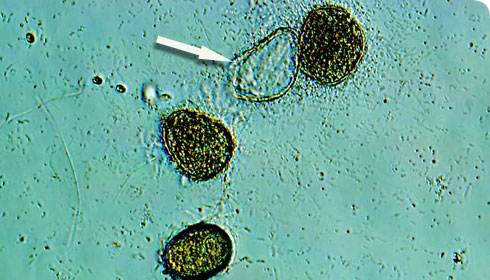Dispersal
Dispersal mechanisms for Pseudomicrothorax dubius have yet to be studied. However, it is likely that both active and passive mechanisms are involved.
Because it is free-swimming, P. dubius may disperse actively over relatively short distances.
Dispersal on regional or global scales is almost certainly a result of passive dispersal mechanisms. Within a river system, for example, dispersal may be achieved by the flow of water sweeping the ciliate downstream.
Like many ciliates, P. dubius produces a dormant stage or cyst. It is widely accepted that ciliate cysts are dispersed by wind and animals, especially migrating birds. It is therefore likely that these are major mechanisms for the wider dispersal of P. dubius (Corliss and Esser, 1974; Foissner, 2006).
Toolbox

Until 1938 whale carcasses were buried in the Museum grounds so that their flesh would decay leaving only the skeletons.
